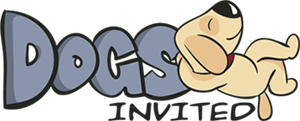As a tutor I have to keep my own skills upto speed as well as passing on my knowledge to those studying their qualifications.
I came across this scanning through my marked work for a Level 4 Higher Professional Diploma today, and thought you may just be interested to read what Dog groomers have to be aware of . This is also a requirement for those studying for their Level 3 Diploma
“ Analyse and compare the roles, responsibilities and limitations for a dog groomer under relevant legislation.”
One of the areas surprising a lot of the groomers taught at level 3 is the amount of pieces of legislation that govern actions by a person running their own dog grooming business. The following is a list of 18 affecting a salon a regular basis:
1. Animal Welfare Act 2006
2. Health and Safety at Work Act 1974
3. The Regulatory Reform(Fire Safety) order 2005
4. Manual Handling Operations Regs 1992 (Am 2002)
5. Control of Substances Hazardous to Health regs 2004 (C.O.S.H.H)
6. Electricity at Work Regulations 1989
7. Data Protection Act 2018
8. Employers Liability Act 1969
9. Waste Electrical and Electronic Equipment Regulations 2006(WEEE)
10. Local Council Requirements
11. Reporting of Injuries Diseases and Dangerous Occurrences Regulations 1995 (RIDDOR).
12. Veterinary Surgeons Act 1966
13. Road Traffic Act 1988
14. Dangerous Dogs Act 1991
15. Controlled Waste (England and Wales) Regulations 2012
16. Management of Health & Safety at Work Regulations 1999
17. Health and Safety (First Aid ) Regulations 1981
18. Personal Protective Equipment Regulations 1992(PPE)
Animal Welfare act 2006
At this acts core are the five freedoms initially set out as far back as 1966 by Lord Brambell in his report into new intensive agricultural farming methods, and now regarded as:
The Freedom from Hunger, thirst and malnutrition
The Freedom from Discomfort
The Freedom from Pain Injury and Disease
The Freedom To Express Normal Behaviour
The Freedom from Fear or Distress.
A groomer has responsibility for all of the above, not just on humane grounds, but also to ensure the dog is content during their visit, and it should make the grooming experience better for dog and groomer.
Fresh water should always be available for dogs in the salon. Groomers should be aware of any special dietary needs including allergies for dogs in their care. If food is provided it should be of an adequate type and portion. Dogs should not be hungry or thirsty as this can impact on a dogs behaviour whilst in the grooming area.
Some provisions groomers make will cross over into more than one freedom. As examples providing the right environment, adequately ventilated, preventing extremes of temperature, providing enrichment, maintaining bio security, providing the correct size accommodation, will all ensure freedom from discomfort. They will also help provide freedom from pain injury disease and the ability to express normal behaviour.
Using the right equipment the right restraints and been knowledgeable in their correct use will also help to ensure these criteria are met.
Dogs should be allowed comfort breaks when required, toileting breaks and a clean area to do so. Dogs should be assessed for any special requirements when grooming, eg do they need specific shampoos for skin conditions, extra support when on the table, special handling of delicate areas.
Some dogs may need desensitisation to both the environment and noises in it. Where a dog is nervous these should be worked on gradually. Consideration also needs to be paid to whether a dog is suitable for socialising around other dogs. Where dogs from the same household may be suitable together, dogs from differing households may not.
Following the covid lockdowns in our salons we have seen an increasing number of pups that have not been socialised with humans or other dogs. Supervision on the grounds of safety and the factors above are even more important in these circumstances.
It is the groomers responsibility to ensure all the requirements under this act are adhered to whilst dogs are in their care. The responsibility also lies with every employee in the salon, as well as owners
Health and Safety at Work Act 1974
Everybody in a working environment has a right to do so safely and within an environment to minimise injury accident or risk to their health and safety. To endeavour make sure this is the case, this act imposes a duty on both employers and employees.
Employers should:
• Carry out full risk assessments to establish what could cause danger in the work place to an individual and put in measures to negate it
• Educate employees to those risks, how to minimise them and who is responsible for doing so
• Liaise with employees and any appropriate health and safety reps to prevent harm occurring
• Provide the appropriate training
• Provide and maintain relevant equipment and Personal protective equipment (PPE)
• Make available toilets, drinking water and washing facilities
• Make sure first aid is available
• Report any dangerous incidents accidents fatalities diseases etc
• Have appropriate liability cover in place
• Ensuring everyone one site is protected
Employees should:
• Ensure they adhere to training and correct working practices
• Ensure they are mindful of theirs and others health and safety
• Work with employers to ensure health and safety requirements are met
• If there is an issue surrounding any procedure equipment or working practices that they inform the appropriate person.
So the responsibility for providing a safe working environment in the grooming salon will fall as much an employees as the employer/ Owner. In looking at a grooming area the immediate hazards that spring to mind would probably centre around the sharpness of cutting implements used. It does however go way beyond this.
As some examples everyone working in the environment should be aware of the dangers. Are there any trip hazards that need marking out. Are there areas that need to have limited access. Are items such as equipment and chemicals stored safely and correctly. Is all equipment from clippers, to scissors restraints, tables baths etc working correctly with no broken parts, no sharp edges. If something is spilled has that been cleared up promptly and appropriate hazard markings such as wet floor signs been placed out to avoid accidents. Are there any trip hazards. Have all staff been appropriately trained in the use of equipment, dog behaviour, body language correct lifting techniques etc. Where electrical equipment needs to be tested this also comes under other legislation, but is still very much covered by Health and safety. The same can be said for PPE. Whilst the duty is on the employer to ensure the relevant equipment training etc is supplied and adhered to, there is also a very serious duty on behalf of the employee to ensure they use best practice and report faults and danger to the employer
The Regulatory Reform(Fire Safety) order 2005
This is the piece of legislation that covers fire safety for non-domestic premises in England and Wales. Scotland has its own legislation.
Either employers or the owner/occupiers of any non domestic building must carry out a fire risk assessment and it must be kept upto date. This should identify any equipment or substances that could act as a source of ignition. As an example in grooming salons this could equipment like dryers, clippers, baths and tables with electric motors, flammable fluids, waste stores, heaters appliances such as kettles washing machines tumble dryers etc. The assessment should also identify who is at risk.
Importantly it should also describe how to minimise those risks, and how to keep people safe. This could include:
• Ensuring Salons are kept tidy with no trailing wires, that could lead to electrical items been pulled over.
• Flammable liquids are stored safely and away from sources of ignition.
• Card and waste paper are not stored in such a manner they can be accidently ignited
• Equipment to detect fires early such as smoke alarms
• Fire fighting equipment is correctly installed and appropriate and staff trained in its use
• Fire exits are clearly marked and emergency lighting installed, and escape routes kept clear.
• Yourself and anyone working with you knows what action to take in the event of a fire
Manual Handling Operations Regs 1992 (Am 2002)
This places a duty of care on employers to negate the need for any heavy lifting in the workplace that may result in injury. If this cannot be avoided, any task needs to be risk assessed, the risk of any injury reduced. This includes consideration of the physical suitability of the person carrying out the task, the equipment used, any protective equipment required.
In the salon this can be seen in application when employees are moving dogs. It should be ensured they know the correct techniques. Where appropriate with larger dogs mor than one person is used where required. Risk can be negated by using hydraulic/electric lifting equipment.
It is the employers responsibility (or in the case of a self employed person their own) to reduce the risk of injury where reasonably practical.
An employee under this legislation is responsible for ensuring they use any equipment and techniques/ practices laid down by the employer to carry out any manual handling safely. They are also required to take reasonable care for their own health and those people working with them
Control of Substances Hazardous to Health regs 2004 (C.O.S.H.H)
On first consideration, some people may not consider anything in the dog grooming environment of been hazardous to health. On closer examination, when it is taken into account these regs cover substances such as any products containing chemicals, fumes, dust vapours,mists and germs it becomes clear that they are.
In a dog grooming environment the shampoos, cleaning fluids that are used, the dust and possibly germs found on dogs and in the working environment will propose a risk at some level.
Like other legislation, it highlights the need to negate the risk or else reduce it. Examples could include using milder shampoos, providing protective equipment to protect against splashes, gloves for bathing for those at higher risk of skin conditions such as dermatitis. Face masks to be used when blasting dogs off. Even the ability to hoover instead of sweeping up
Any chemicals should be stored safely, staff should be trained appropriately and all chemicals or hazardous to health stored and used in compliance with manufacturers instructions which will be displayed on the labels.
An employer has a duty to know what the hazards are, how to prevent them, provide appropriate controls and training. Ensure those are adhered to by employees, and where required continually monitor health and communicate all this effectively to employees.
Employees are required to ensure they know what the risks are, how to avoid them, what action to take in an emergency and also to be know the location and have access to the safety dat sheets for any products they are using
Electricity at Work Regulations 1989
These provide a duty of care on both employer and employee to ensure they are adhered to in the work environment. The employer has to ensure that any electrical equipment provided is fit for the purpose for which it has been used, it is maintained properly, inspected on a regular basis and employees have the correct training and any protective equipment required whilst its in use.
Employers also have to ensure the correct equipment is installed for the environment eg waterproof sockets and there is a readily accessible switch to disconnect the supply
Data Protection Act 2018
This act supersedes the Data Protection Act 1998. This lays down certain criteria in relation to the storage of personal data along with how it is used.
Depending on what data is stored in relation to customers, businesses may be required to be registered with the data commissioner
There is very strict criteria in how any data idientifying a living individual can be used. One of the new additions in this act was ensuring business who used peoples data to contact them directly for marketing, made sure that person “opted in” rather than “opted out” to receive material.
Customer date must be stored securely and not passed to others. Each business should also have a GDPR statement explaining to customers how their data is stored and what it will be used for.
Under this legislation, there are not only hefty fines but infractions may lead to arrest.
Employers Liability (compulsory Insurance) Act 1969
This will be required by any Groomers with employees. As an employer you are responsible for the health and safety of your employees. Should an employed groomer become ill or injure themselves at work they may try and claim damages. This act ensures if you are an employer you have a minimum level of cover in place.
Having this cover in place does not negate any responsibilities under the Health and Safety Act. The minimum amount of cover required is £5million. Once issued with a certificate this must be displayed clearly where all employees can see it either physically or electronically in an easy to access location. This is only required where you have employees on contract under a service contract or apprenticeship, it may also be required if you supply work materials or equipment and some other conditions surrounding “self employment” As an employer if you have students or school students on placement or training you will need to notify the insurers as they will need cover too.
The HSE are responsible for enforcing the law on employers liability and fines can be upto £2500 for any day you don’t have insurance in force and upto a £1000 if you cant produce a certificate.
Waste Electrical and Electronic Equipment Recyling Regulations 2013(WEEE)
This was bought into force to cover a wider range of items than initially covered in the 2006 Directive. The legislation was introduced to cover the ever expanding numbers of consumer products that are been disposed of. These include, but are not limited to:
• Large electrical items such as fridges cookers microwaves washing machines, dishwashers
• Smaller electrical items such as hoovers, irons, toasters, clocks (this would also indlude clippers
• IT items such as computers laptops, photocopiers, phones
• Lighting such as bulbs fluorescent tubes etc
• Electric tools, drills , saws
• Leisure equipment electric games, trains, running machines
• Monitoring equipment such as Smoke detectors, thermostats.
• Dispensing equipment such as those used for drinks.
All these items need to be disposed of correctly The act actually placed a responsibility on distributors and manufacturers to offer a free take back service to consumers when purchasing replacement equipment. And a distributer scheme where they offer a disposal scheme free of charge at designated centres.
Where these items have been used for business it is up to the business to ensure that it is separated, collected and treated properly. When paying for waste collection from your salon you must make sure whoever is collecting is licenced for collecting the appropriate waste. This is another piece of legislation that carries large fines if breached upto £5000 at magistrates court and unlimited fines at crown court
AND THIS WAS THE BRIEF OVERVIEW!



